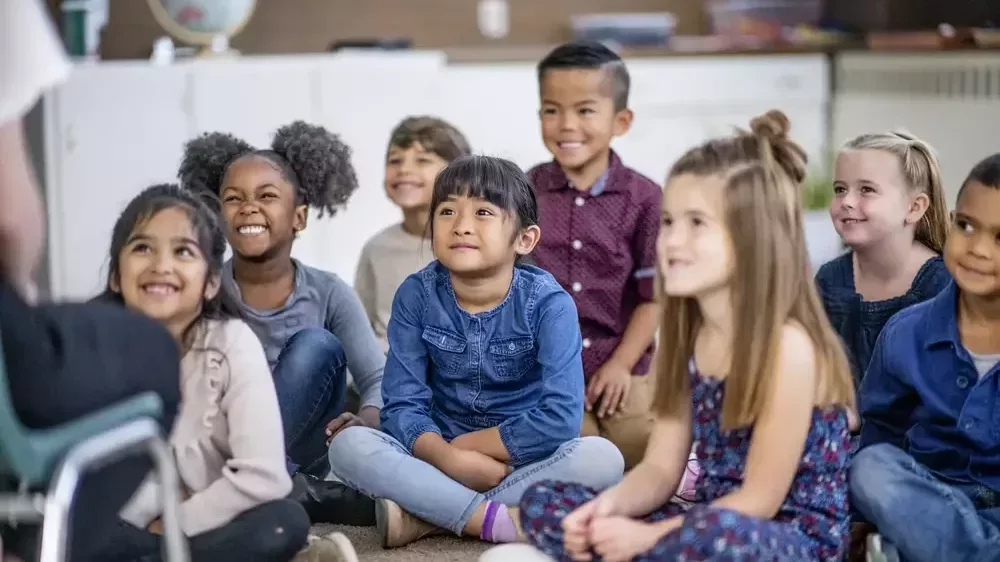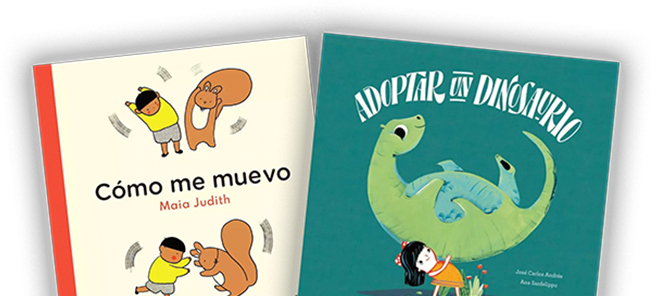
Have you noticed the way your child’s eyes light up as they tune into a story? Raising a reader is one of the best ways you can improve your child’s listening skills, even when they’re still a baby.
Kids are naturally drawn into the imaginative, whimsical world of storytelling, and that has a major benefit on their brains. When you add a second language into the mix, the rewards are even greater.
Bilingual kids have an increased connection in their brains’ cortical regions, which control memory, language processing, learning, thinking, and more.
It turns out that bilingual reading helps children improve audio processing and sound recognition, too. Bilingual kids have even been shown to have better musical pitch than their monolingual peers (Krizman et. al., 2012).
If you want to help your child improve their own listening skills, here’s how reading can make all the difference in their development.
The Connection Between Reading and Listening
When we learn how to read, our brains are not only focusing on the text. They’re really undertaking multiple processes, such as decoding and comprehending. Decoding is the act of turning print into meaningful words. Remember trying to slug through those college textbooks? Decoding was a lot more difficult, which is what made them so tedious to read.
Strong readers are better decoders, and their brains can quickly translate meaning from a variety of texts. But that’s not all — it turns out they’re also better at processing languages as a whole. This leads to greater listening, better comprehension, and more effective communication.
Listening to stories also helps children learn how to read, even before they’re speaking in full sentences. Every age and stage benefits from books.
Kids pick up on far more than just a good tale when they read. They learn key elements of language, such as:
- Grammar and syntax
- Contextual language
- Vocabulary
- Literal knowledge
- Inferences
All of these components play out in everyday conversations, which makes readers better equipped to listen and learn in their daily lives. Bilingual kids have the added advantage of learning two languages at once. This increases their language processing and comprehension drastically.
Bilingualism strengthens the attention center of the brain, which makes it easier for kids to concentrate and focus on set tasks. During conversation, this can reveal itself as greater attentiveness and responsiveness.
You’ll notice that bilingual kids rarely make the same slip-ups adults do when speaking a second language. They’re far less likely to accidentally use a word from a different language, or confuse grammar rules. This is because as young speakers, both parts of the languages are active in their brains. They are able to shift their prefrontal cortexes to their target language at any given moment, making it easier for them to hold conversations in multiple languages with different speakers, all without skipping a beat.
How Bilingualism Helps Kids Read Better
Your child doesn’t need to be fluent in two languages to benefit from bilingualism. Even kids who are simply exposed to another language have greater cognitive function. Exposure to a second language requires greater brain flexibility.
Coupled with bilingual reading, this helps kids build greater comprehension, information processing, and problem-solving skills.
So, if you speak a second language at home, the mere act of hearing you talk can help children improve their listening. But by using books, you can help them make more direct connections with the language.
A 2017 study in the journal of Child Development found that bilingual kids were able to learn how to read better and faster than monolingual children. Knowing two phonologies (sound systems) aided bilingual children when it came to reading pronunciation.
Interestingly, the study found that children who learned a second language from birth (simultaneous bilingualism) benefitted as much as children who were exposed to a second language later (sequential bilingualism). Children who learned English as a second language were caught up to their peers by fourth grade.
The plasticity of a child’s brain makes it far easier for them to absorb, store, and retrieve information. This means bilingual kids have a far easier time understanding and applying language in different contexts, including reading.
3 Tips for Raising Bilingual Readers
Now that you know how bilingualism benefits listening skills, let’s cover some tips on helping you raise a bilingual reader.
1. Make Language Exposure Fun
When teaching kids anything, entertainment is key. No one wants to run through grammar drills or spelling exercises, and they don’t have to. Reading is a fun, exciting, vibrant way to introduce your child to new languages, cultures, and customs.
2. Read Aloud in Both Languages
Reading the story in their first and second language can increase the connection between them. You can either read a story once in English, then in Spanish (or your target language), or find a book that has the translations available on the same page.
Practice reading different ways together. You may read in English, then let your child read it again in their second language. Using both languages simultaneously reinforces them equally.
3. Repeat Stories
Repetition is essential to learning a language. It also helps children master reading skills. Reading through a book several times can help kids understand it better, and pick up on more information in a single sitting.
Find books that your kids love, and read them as many times as they want. Rereading actually helps familiarize kids with pronunciation, grammar, and vocabulary. They’ll start to memorize phrases and sentence structure, which they can apply in their conversations.
They’ll also be able to read more stories better since they’ve built a deeper foundation through their favorite stories.
Unlock your child’s door to the Spanish language with Sol Book Box! Subscribe to a book box today and discover handpicked Spanish & bilingual children's books your niño (and you!) will love.
Sources:
- https://blog.listenwise.com/2016/12/listening-reading-related/
- https://bilingualkidsrock.com/benefits-bilingualism-better-listening-skills/
- https://www.the74million.org/article/smith-better-listeners-make-better-readers-and-more-successful-students-its-time-to-bring-the-science-of-listening-into-the-home-classroom/
- https://bold.expert/how-do-bilingual-children-learn-to-read/
- https://srcd.onlinelibrary.wiley.com/doi/full/10.1111/cdev.12745
- https://www.pnas.org/doi/10.1073/pnas.1201575109




